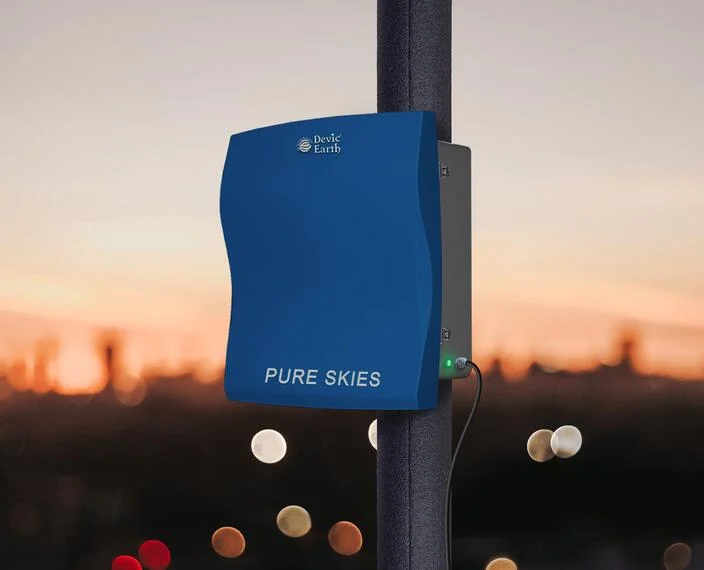Air pollution and climate change are issues that transcend national boundaries. Exposure to high levels of air pollution adversely effects Millions of people around the world. Both short and long term exposure to air pollutants can cause a variety of health issues like respiratory infections, heart disease and lung cancer. It has forced people to take keener interest in the level of pollution in their localities.
Developments in technology are being used for improving air quality. Devices like catalytic converters are being used that catalyzes a redox reaction that transforms dangerous air pollutants into less-harmful pollutants. Scrubbers are another pollution control device that remove air pollutants like sulfur dioxide, chlorine, hydrogen sulfide, and hydrogen chloride from industrial exhaust.
A Bengaluru based startup, Devic Earth, has come up with an air pollution control system that uses pulsed Wi-Fi technology to tackle airborne gaseous and particle pollutants in industrial complexes, homes and cities.
The air pollution control system, Pure Skies, is a plug-and-play system that, as claimed by the company, improves air quality by 33-90% over large areas. It just requires pushing a button that removes 40-50 % of nano-sized particles at <20µm, including PM2.5 and PM10 from the air.
The system consists of custom-made omnidirectional antenna, an IoT hardware system and Power Source. The technology is backed by 10 years of research and uses pulsed wi-fi which is very similar to wi-fi at home. It creates a temporary charge on the particles present in the air causing them to collide, become heavier and sink to the ground. This way it accelerates the clearance of pollutants by six to seven times the natural speed of the dry deposition process i.e. the process whereby particles are removed from the atmosphere over time due to gravity.
Pulsed radio wave technology was earlier used in 90’s to mitigate certain pollutants in wastewater and sewage but was discontinued due to economic unviability. Devic Earth is utilising the same technique pf pulsed RF energy for mitigating air pollution.
Pulsed radio wave technology creates a weak electric field that affects particle pollutants of very small size up resulting in the formation of temporary dipoles. Clearance of pollutants occurs due to clustering and settling of these particles.
The company claims that this technology well-controls Particulate Matter, PM10, PM2.5, and PM1. In fact, PM1 and PM2.5 are reduced more than PM10 due to their smaller size but there is little effect on particles larger than 20microns in diameter.
Pure Skies is also has no adverse effect on health and is safe as units work in the ISM frequency band similar to the Wi-Fi spectrum (2.4-2.5 GHz) and power levels are maintained under standard regulations. At present, the device is being used in factories, offices, cities and at events. Pure Skies is available on subscription based business model very similar to DTH plans.


















